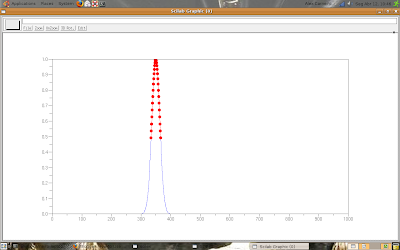So, let's try it:
//limits on 'x' axis
X1 = 20;
X2 = 30;
X3 = 50;
//limits on 'y' axis
Y1 = 25;
Y2 = 50;
Y3 = 80;
//variables 'x' and 'y', for each function
[y1, x1] = meshgrid([1:Y1]', [1:X1]');
[y2, x2] = meshgrid([1:Y2]', [1:X2]');
[y3, x3] = meshgrid([1:Y3]', [1:X3]');
//functions
w1 = %pi/6;
z1 = sin(w1*(x1 + y1));
w2 = %pi/10;
z2 = cos(w2*(x2 - y2)) + 5;
z3 = tanh(x3 - y3) + 10;
//conversion for plot3d(.)
[xx1, yy1, zz1] = genfac3d(1:X1, 1:Y1, z1);
[xx2, yy2, zz2] = genfac3d(1:X2, 1:Y2, z2);
[xx3, yy3, zz3] = genfac3d(1:X3, 1:Y3, z3);
//making graphs on the same screen
plot3d(xx1, yy1, list(zz1, color("red")*ones(1, max(size(zz1)))));
plot3d(xx2, yy2, list(zz2, color("green")*ones(1, max(size(zz2)))));
plot3d(xx3, yy3, list(zz3, color("blue")*ones(1, max(size(zz3)))));
Or, if you prefer, you can use:
//same of the three last lines
plot3d([xx1 xx2 xx3], [yy1 yy2 yy3], list([zz1 zz2 zz3], [color("red")*ones(1, max(size(zz1))) color("green")*ones(1, max(size(zz2))) color("blue")*ones(1, max(size(zz3)))]));
Now, see the result:

So, it's all. Any question?
